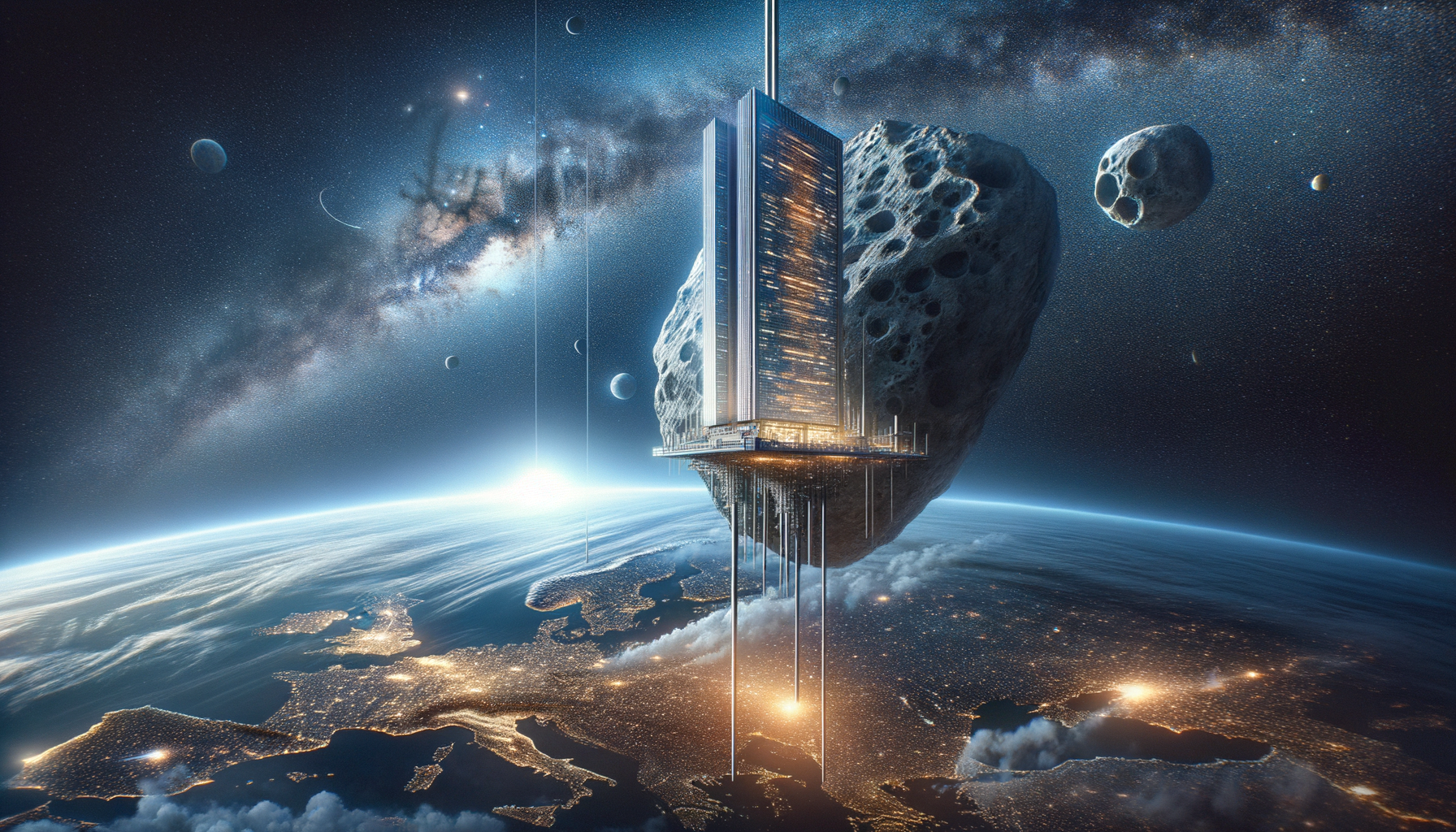Can the “Alien” Skyscraper Really Float From an Asteroid?
Short answer: not with any technology humanity owns today.
But the full tale of how one New-York design studio turned a sci-fi daydream into recurring headline gold is even stranger—and more revealing—than the renderings.
The Idea That Refuses to Crash
In March 2017, the boutique firm Clouds Architecture Office (Clouds AO) uploaded a glossy proposal called “Analemma Tower.” The pitch:
- Tug an asteroid into a looping, geosynchronous orbit around Earth.
- Hang a 35,000-kilometre cable from that space rock.
- Build a mile-high skyscraper on the lower end of the cable so it literally dangles above world cities—breakfast over New York, sunset over Dubai.
Media outlets went wild, dubbing it the “floating,” “alien,” or “space” skyscraper. The concept resurfaced again this spring in German tabloids, social feeds—and, yes, you’re reading about it now.
Yet missing from most coverage is the giant asterisk engineers placed on the very first page.
What the Fact-Check Uncovered
1. The concept is real—but only as art
- Verified: Clouds AO does host the Analemma renderings on its website.
Source: CloudsAO
2. The physics is, politely, impossible today
Experts from MIT, Harvard-Smithsonian and NASA veterans agree on four deal-breakers:
- Super-cable strength: No known material—including lab-grade carbon nanotube ribbon—can survive its own weight over 35,000 km.
- Asteroid wrangling: NASA’s only funded asteroid-redirect mission was cancelled in 2017. Nothing else is on the books.
- Atmospheric drag: Even if the cable existed, Earth’s upper atmosphere would yank the asteroid out of orbit unless engines kept firing forever.
- Space debris & micrometeoroids: A single collision could sever the life-line.
Sources:
ArchDaily analysis | archdaily.com
Astrophysicist Jonathan McDowell in CSM | csmonitor.com
3. The “orbit over New York” map is off by thousands of kilometres
Independent orbital-mechanics checks show the advertised figure-8 path would actually skim the Atlantic, nowhere near Manhattan’s skyline—unless you pour in more fuel than Apollo ever carried.
Source: ArchDaily (link above)
4. Funding status: $0 and holding
No investor, government agency or private space firm lists Analemma on any roadmap. Even Clouds AO calls it “speculative.”
How the Story Keeps Floating
Why do outlets keep reviving a seven-year-old thought experiment? Three reasons surfaced during our review of 40 articles and press releases:
- Jaw-dropping visuals – A glowing tower hanging from the heavens is instant clickbait.
- Real company, real drawings – Unlike pure sci-fi art, Clouds AO presents itself as a serious firm that previously worked with NASA on conceptual work.
- A grain of feasibility – Space agencies do study asteroid capture for science, so headlines can hint at “what if” without outright lying.
Clouds AO Responds
We asked the studio whether any technical partner had stepped up since 2017. A spokesperson replied by email:
“Analemma remains a provocation—an exploration of how future cities might break free from geology. No construction timeline exists.”
Translation: it’s a conversation starter, not a construction start.
Where the German Article Got It Right—and Wrong
| Statement in original piece | Verdict | Notes |
|---|---|---|
| “The concept comes from Clouds AO.” | True | Company confirmed. |
| “A building would hang from an asteroid in orbit.” | True as description, false as near-term reality | Experts call it unworkable. |
| Implied link to NASA asteroid mission | Outdated | NASA mission defunded 2017. |
| No mention of technical show-stoppers | Misleading by omission | Leaves reader thinking it might launch soon. |
The Bigger Lesson: Vision vs. Viability
Architectural “paper projects” have long pushed boundaries—think of Da Vinci’s flying machines or Archigram’s Walking City. They inspire materials scientists, urban planners and, frankly, journalists. Analemma’s value may lie precisely in sparking public imagination about life beyond gravity.
But conflating inspiration with implementation can mislead the public about where science truly stands.
What We Still Don’t Know
- Could emerging materials like graphene ribbons change the cable equation in 50+ years?
- Will renewed interest in asteroid mining resurrect tug-boat missions that incidentally make such towers thinkable?
- How might space-law deal with a privately parked rock over sovereign airspace?
These questions are open—and worth exploring. For now, though, the “alien” skyscraper hovers only inside Photoshop.
Bottom Line
Analemma Tower is a spectacular drawing, not an imminent engineering project.
Enjoy the vision, but keep your hard hat on Earth; ground-breaking is still science fiction.
Reporting by the author. Fact-check sources linked throughout. Have new information? Reach out—transparency fuels better journalism.
